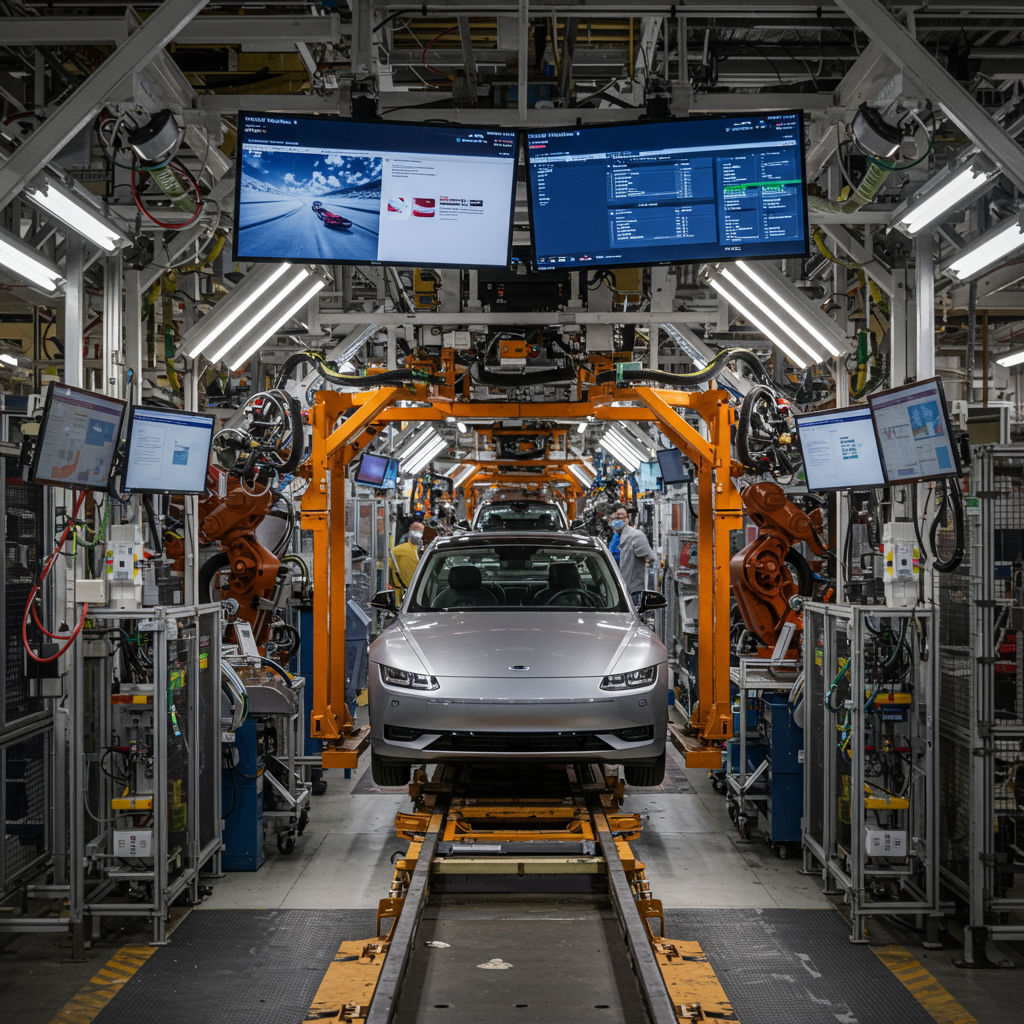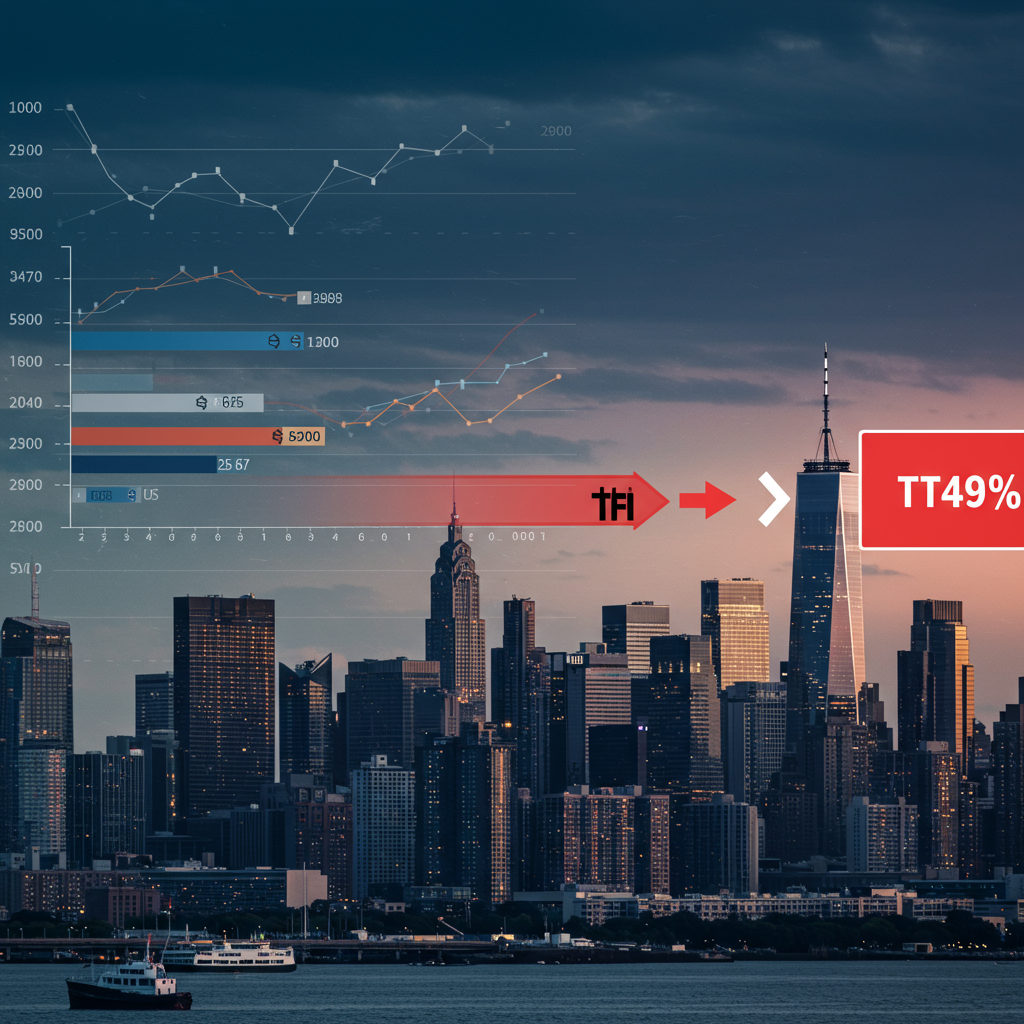The future of the United States auto industry faces a critical juncture. Amidst potential policy shifts, particularly concerning electric vehicle (EV) incentives, experts warn the U.S. risks falling further behind China in a rapidly transforming global market. While proponents argue for reduced government spending and reliance on market forces, analysts counter that withdrawing support now could jeopardize domestic manufacturing investments and cede crucial technological leadership to foreign competitors.
China’s Dominance in the Global EV Landscape
China has already established a significant lead in the production and adoption of electric vehicles. According to figures from 2024, Chinese companies manufactured a staggering 70% of the electric cars sold worldwide. In stark contrast, automakers based in the United States accounted for only 5% of global EV sales during the same period.
This dominance isn’t just about volume. Chinese firms like BYD, SAIC, and Geely have become major global players, leveraging vast domestic demand and established supply chains. Only one American company, Tesla, ranks among the world’s top 10 largest EV manufacturers. Even Tesla, once the undisputed global leader, has been surpassed in production volume by companies like BYD and Geely.
China’s formidable head start extends beyond assembly lines to the critical battery technology and mineral processing needed for EV production. This scale allows Chinese manufacturers to spread research and development costs across a massive production base, secure more favorable pricing for components, and benefit from economies of scale essential in the cost-sensitive auto industry.
Potential Shifts in US EV Policy
Reports indicate that a potential shift in U.S. policy under a new administration could significantly impact the trajectory of EV adoption and manufacturing domestically. Proposed changes, particularly within potential Republican legislative packages, target existing federal incentives designed to spur the EV transition.
One key area is the consumer tax credit for purchasing new EVs, currently offering up to $7,500. A proposed House bill suggests phasing out this credit after 2026, effectively ending its availability for many major automakers as early as the close of 2025, reverting to previous eligibility thresholds based on sales volumes. The tax credit for used EVs, worth up to $4,000 and specifically aimed at increasing accessibility for middle- and lower-income buyers, could be eliminated entirely by the end of 2025.
Beyond consumer incentives, stricter rules could be placed on tax credits for battery manufacturing, potentially hindering eligibility if components or partnerships involve Chinese entities. Additionally, proposals include imposing a new annual fee on EV drivers, intended to offset perceived lost gas tax revenue, but calculated by groups like Consumer Reports to be substantially higher than what typical gasoline car drivers pay in federal fuel taxes. Regulatory pressure on automakers to transition rapidly to EVs may also ease.
Jeopardizing Domestic Investment and Adoption
Automakers and clean energy advocates express significant concern over the potential removal or reduction of these incentives. While some manufacturers might initially welcome a slowdown in the mandated transition pace due to softer-than-expected consumer demand, they warn that removing financial “carrots” will make EVs less affordable for many buyers. This exacerbates the current challenge of bridging the upfront cost gap between electric and gasoline vehicles.
Billions of dollars have already been invested in North American EV and battery manufacturing facilities, spurred in part by the promise of federal incentives laid out in legislation like the Inflation Reduction Act (IRA). Automakers emphasize that production plans are made years in advance, and sudden policy reversals jeopardize these massive investments and the jobs they were intended to create across the United States.
Analysis suggests that eliminating tax credits and potentially weakening emissions regulations could dramatically slow the pace of EV adoption in the U.S. One study estimated that under such conditions, U.S. EV sales in 2030 could be 40% lower than projected under current policies. This slowdown would directly impact factory expansions and make it harder for U.S. automakers to achieve the necessary scale to compete effectively with the advanced and cost-competitive offerings from China.
The Strategic Importance of EV Industrial Policy
Many experts view current U.S. EV incentives not merely as environmental measures but as critical tools of industrial strategy. Policies like the 30D consumer tax credit and the 45X advanced manufacturing production credit were specifically designed to encourage the development of a domestic or allied EV battery supply chain independent of China.
A key requirement of the 30D credit mandates that eligible vehicles source battery components and critical minerals from North America or free trade partners, explicitly excluding “foreign entities of concern,” a category primarily aimed at China. This structure was intended to build U.S. capacity from the ground up, from mineral extraction and processing to component manufacturing.
The 30D consumer credit provides a crucial “demand signal” to manufacturers. By ensuring a potential customer base willing to pay a premium for vehicles meeting domestic sourcing requirements, it provides confidence for companies to invest billions in U.S. facilities needed to qualify for the 45X production credits. Removing the 30D credit eliminates this vital demand signal, potentially jeopardizing billions in planned investments in U.S. battery mineral and material projects. Without this incentive, automakers might be less willing to pay the higher costs associated with U.S.-sourced materials compared to cheaper options from dominant foreign markets, including China.
Examples of investments tied to these policies include significant projects in lithium and nickel production in the U.S., involving partnerships with major automakers and battery manufacturers. Undermining the incentives risks slowing or halting the progress of building this crucial domestic supply chain, leaving the U.S. reliant on overseas sources.
Competing on the Global Stage
The global market is unequivocally shifting towards electrification. Countries in Asia, Europe, and Latin America are increasingly adopting EVs, with many consumers opting for the wide array of affordable electric and hybrid models offered by Chinese companies. This trend has already contributed to U.S. automakers steadily losing ground in international markets in recent years.
Analysts predict that based on current trends, sales for companies like G.M. and Ford in the rest of the world could become negligible compared to their U.S. profits. Ceding further ground in EV technology and production due to a lack of competitive incentives could solidify China’s lead and make it exponentially harder for U.S. firms to regain international market share or even defend their position at home against potential future imports.
While proponents of cutting incentives argue for market forces, the reality is that China’s dominance is partly built on significant state support and strategic industrial policy over many years. Without a proactive strategy that includes both manufacturing support and consumer demand stimulation, the U.S. risks falling into a position where catching up becomes economically prohibitive.
Challenges and Uncertainties
The debate over EV policy highlights divisions within the industry and political landscape. While major automakers generally support retaining credits that have spurred investment, some figures, like Tesla’s CEO Elon Musk, have suggested the industry can manage without them. However, companies like Ford and G.M. are reportedly still losing money on their EV divisions, making them more vulnerable to the loss of incentives than Tesla.
The political argument centers on whether EV incentives represent wasteful spending or necessary investments in future competitiveness and job creation. The potential impact on state-level policies, particularly California’s ability to set its own emissions standards which influence many other states, adds another layer of complexity.
Ultimately, the final outcome of potential legislative negotiations in the Senate will determine the path forward. While the U.S. EV market is unlikely to disappear entirely, the pace of its growth, the strength of its domestic supply chain, and its ability to compete with China on the global stage hang in the balance. The strategic stakes for American manufacturing and technological leadership are high.
Frequently Asked Questions
What US EV incentives might be cut under proposed policies?
Proposed policy changes could eliminate or significantly reduce federal tax credits for buying both new ($7,500) and used ($4,000) electric vehicles. There are also discussions about tightening eligibility for battery manufacturing credits, especially regarding ties to Chinese companies, and potentially introducing a new annual fee for EV owners.
Why do experts say cutting US EV credits helps China?
Experts argue that cutting US EV incentives weakens demand for domestically sourced EVs and components. This makes it harder for US companies to compete on price with China, which already benefits from massive economies of scale and established supply chains. Removing incentives could slow U.S. manufacturing investment and inadvertently bolster China’s dominant position in the global EV market.
How would potential US EV policy changes affect car buyers?
Reducing or eliminating tax credits would increase the upfront cost of electric vehicles for consumers, potentially making them less affordable and slowing adoption. While EVs offer lower long-term operating costs, the higher initial price barrier without incentives could steer buyers towards traditional gasoline vehicles, especially middle- and lower-income buyers who benefited from used EV credits.



